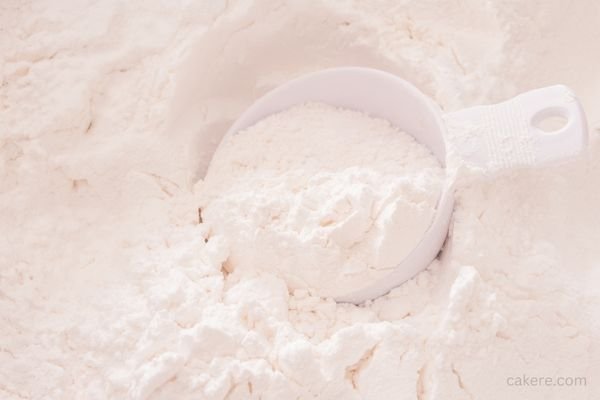All-purpose flour is a staple ingredient in many kitchens. Whether you’re making cookies, cakes, bread, or pastries, you’re likely to find this versatile flour in your recipe.
But have you ever wondered what all-purpose flour does in baking? How does it affect the final outcome of your baked goods?
In this article, we’ll explore the role of all-purpose flour in baking. We’ll take a closer look at its properties and how it interacts with other ingredients in your recipes. By the end of this article, you’ll have a better understanding of how to use all-purpose flour in your baking.

- What is All-Purpose Flour?
- How Does All-Purpose Flour Affect Texture?
- How Does All-Purpose Flour Affect Structure?
- How Does All-Purpose Flour Affect Flavor?
- Substituting All-Purpose Flour in Baking
- FAQs About All-Purpose Flour in Baking
- Conclusion
What is All-Purpose Flour?
All-purpose flour is a type of flour that is made from a blend of hard and soft wheat. It’s called “all-purpose” because it can be used for a wide range of baking purposes, from cakes and cookies to bread and pizza dough.
All-purpose flour is versatile because it has a moderate protein content, which makes it suitable for a variety of baked goods. It’s typically labeled as “unbleached” or “bleached,” but both types can be used interchangeably in most recipes.
How Does All-Purpose Flour Affect Texture?
All-purpose flour plays a key role in determining the texture of your baked goods. The amount of protein in the flour affects the amount of gluten that forms when the flour is mixed with liquid. Gluten is a protein that gives baked goods their structure and chewy texture.
All-purpose flour has a moderate protein content, which means it produces a moderate amount of gluten. This makes it suitable for many types of baked goods, including cakes, cookies, and pastries. However, if you’re looking for a more tender texture, you might want to use a lower protein flour, such as cake flour.
How Does All-Purpose Flour Affect Structure?
The protein in all-purpose flour also affects the structure of your baked goods. Gluten gives baked goods their structure and helps them rise. If there is too much gluten, your baked goods may be tough and chewy. If there is too little gluten, they may be flat and crumbly.
All-purpose flour has a moderate amount of protein, which means it produces a good structure without being too tough. It’s a good choice for bread, which requires a strong structure to rise properly.
How Does All-Purpose Flour Affect Flavor?
All-purpose flour doesn’t have a strong flavor of its own, but it can affect the flavor of your baked goods. For example, if you use a bleached all-purpose flour, it may have a slightly metallic taste. This is because bleaching agents are used to whiten the flour.
If you want a more neutral flavor in your baked goods, it’s best to use an unbleached all-purpose flour. This will give you a clean, neutral flavor that won’t compete with other ingredients.
Substituting All-Purpose Flour in Baking
If you don’t have all-purpose flour on hand, there are several substitutes you can use. Some of the most common substitutes include:
